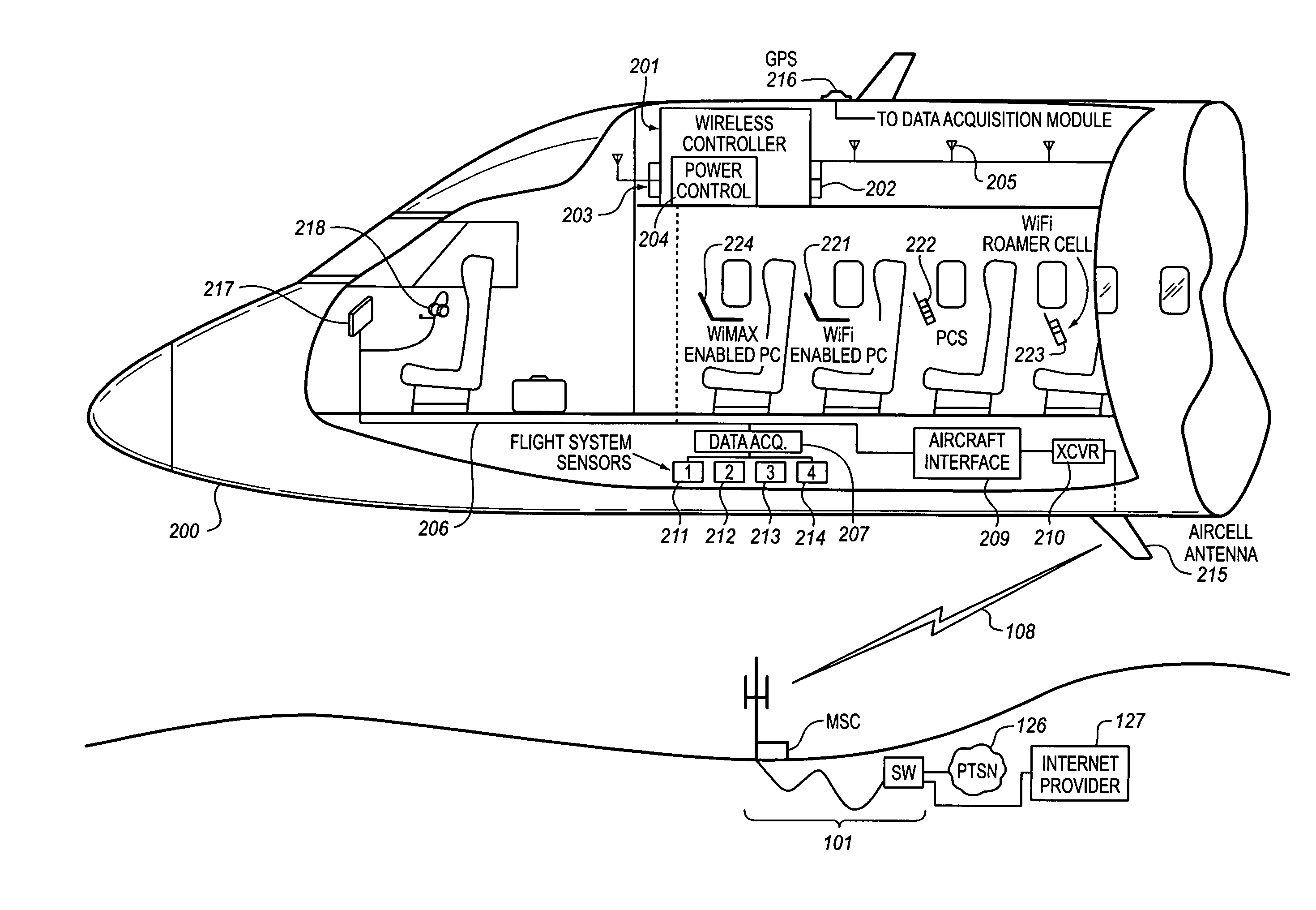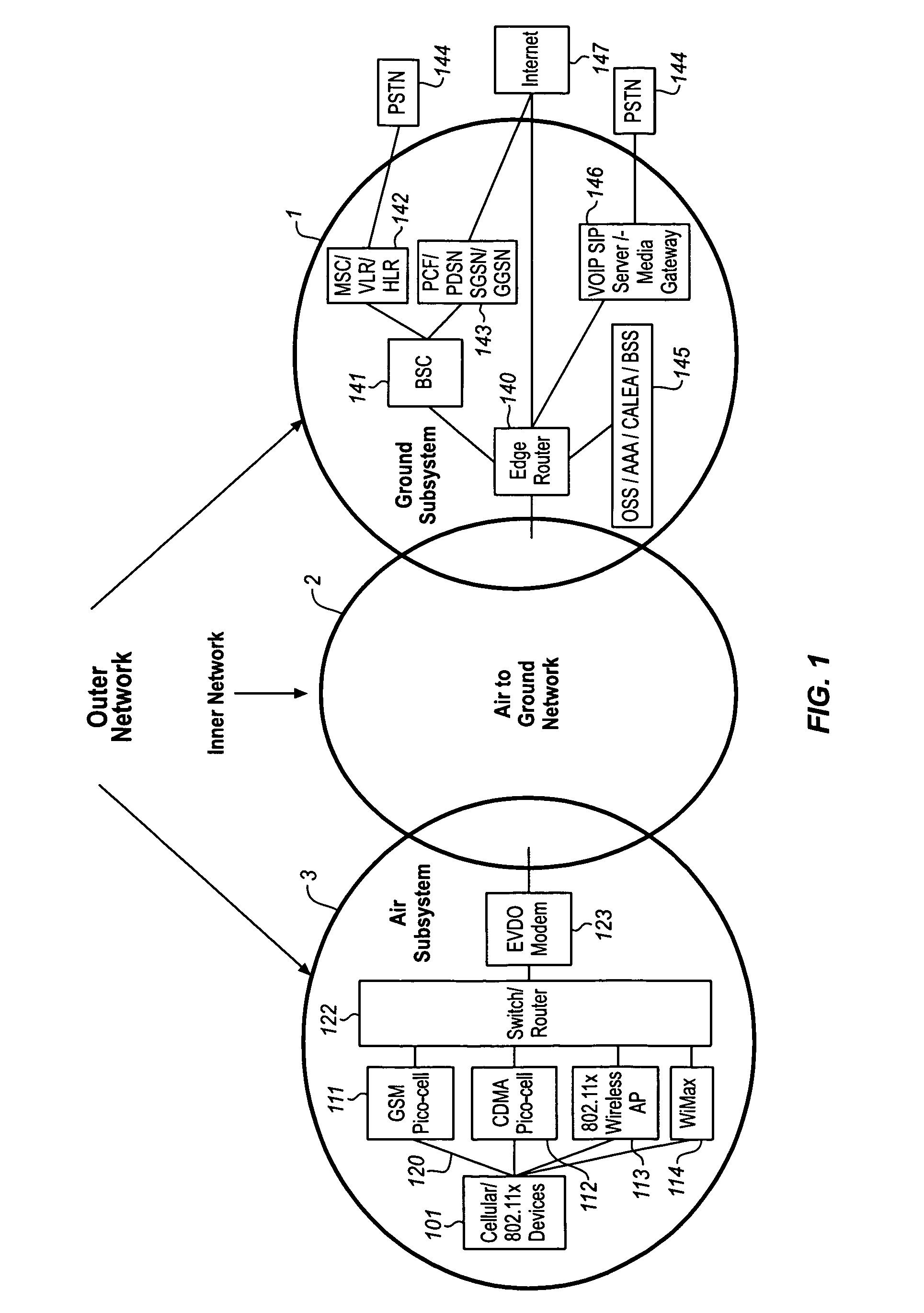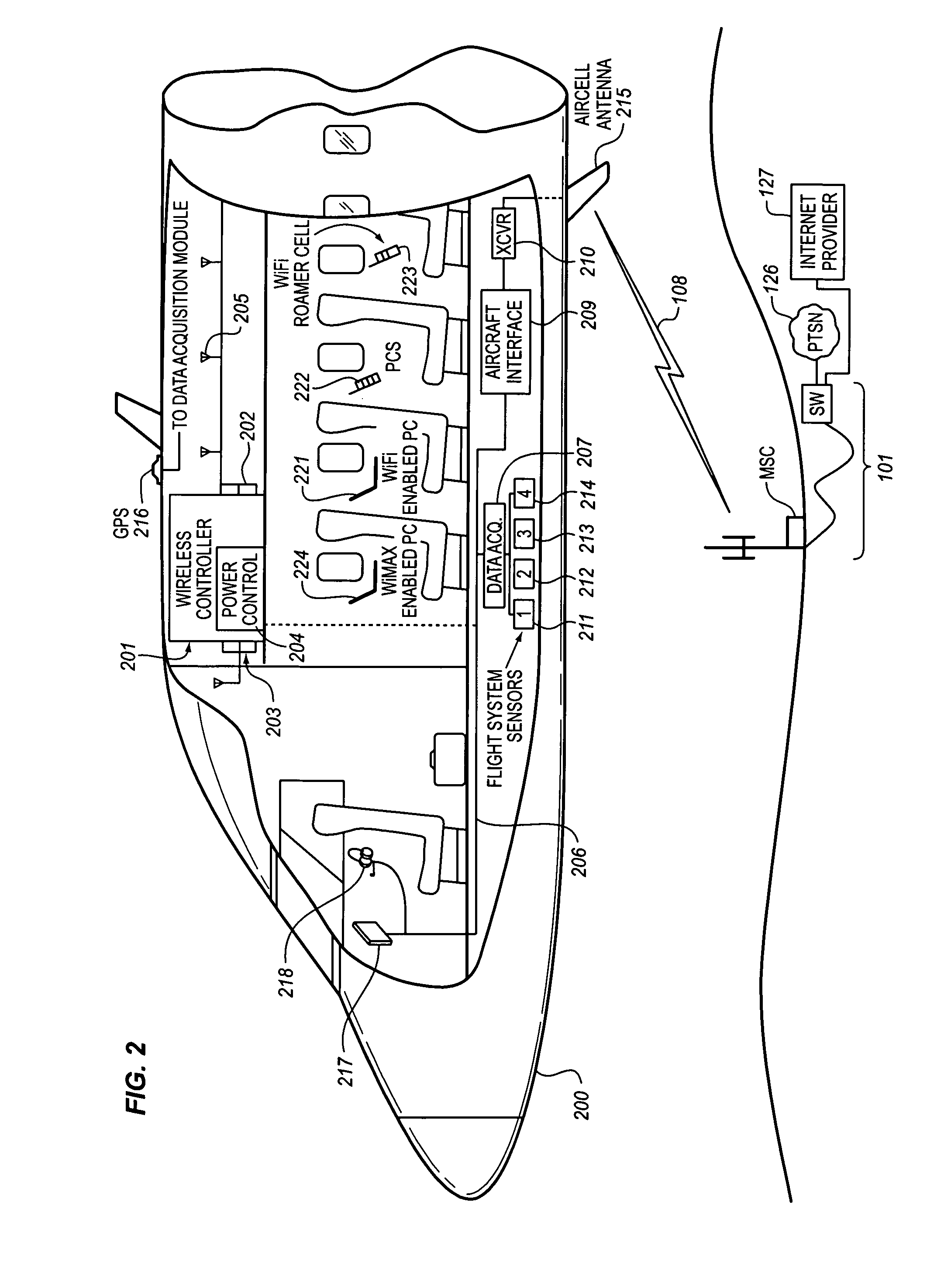System for creating an aircraft-based internet protocol subnet in an airborne wireless cellular network
a technology of internet protocol and airborne wireless, applied in the field of cellular communications, can solve the problem that communication cannot be individually identified by ground-based access networks, and achieve the effect of simplifying the provision of these services and enhancing the travel experience of passengers
- Summary
- Abstract
- Description
- Claims
- Application Information
AI Technical Summary
Benefits of technology
Problems solved by technology
Method used
Image
Examples
Embodiment Construction
Overall System Architecture
[0019]FIG. 1 illustrates, in block diagram form, the overall architecture of the non-terrestrial cellular communication network, which includes an Air-To-Ground Network 2 (Inner Network) that interconnects the two elements of an Outer Network, comprising an Air Subsystem 3 and Ground Subsystem 1. This diagram illustrates the basic concepts of the non-terrestrial cellular communication network and, for the purpose of simplicity of illustration, does not comprise all of the elements found in a typical non-terrestrial cellular communication network. The fundamental elements disclosed in FIG. 1 provide a teaching of the interrelationship of the various elements which are used to implement a non-terrestrial cellular communication network to provide content to passengers' wireless devices which are located in an aircraft.
[0020]The overall concept illustrated in FIG. 1 is the provision of an “Inner Network” that connects the two segments of the “Outer Network”, c...
PUM
 Login to View More
Login to View More Abstract
Description
Claims
Application Information
 Login to View More
Login to View More - R&D
- Intellectual Property
- Life Sciences
- Materials
- Tech Scout
- Unparalleled Data Quality
- Higher Quality Content
- 60% Fewer Hallucinations
Browse by: Latest US Patents, China's latest patents, Technical Efficacy Thesaurus, Application Domain, Technology Topic, Popular Technical Reports.
© 2025 PatSnap. All rights reserved.Legal|Privacy policy|Modern Slavery Act Transparency Statement|Sitemap|About US| Contact US: help@patsnap.com



